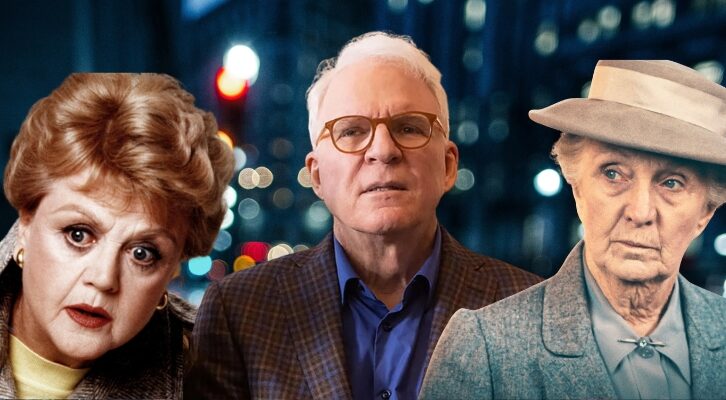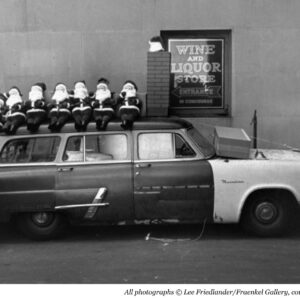
When Hunter S. Thompson
Ran for Sheriff
David Wills on a Very American Chapter of Colorado's History
Aspen in the late 1960s was still a quiet, peaceful place where one could retreat from the chaos of the outside world. The rest of America seemed determined to bring Aspen into the modern era, but there was reluctance in the valley. Many in the community were determined to stop this from happening, but others were more than willing to take the huge sums of money on offer from developers to tear down this little piece of paradise and put up parking lots, apartments, and gaudy hotel complexes.
It was an odd town with a mix of very progressive and very conservative inhabitants, and naturally it became a place where public debate was valued and tensions were often high between competing ideologies. On the Letters to the Editor pages of two Aspen newspapers—the liberal Times and the conservative Illustrated News—one could easily find colorful, passionate takes on local issues. But even in a place like Aspen, there was a limit to how colorful and how passionate one could be without drawing attention.
In March, 1968, a letter that began “Herr Editor” was sent to both newspapers. Signed by Hunter S. Thompson and allegedly written on behalf of Adolf Hitler’s personal secretary, Martin Bormann (believed at the time to be hiding in Argentina), it heaped praise upon the Aspen Sheriff’s Department for possessing, in the writer’s mind, the same sort of values as the Third Reich. The letter was an amusing piece of satire by a man with a fondness for shock humor and a talent for satirical letters.
For Hunter Thompson, angry letters were an art form. He did not just fire off quick midnight missives, but instead crafted and drafted careful but vituperative communiques that were intended to impress and dumbfound their recipients. He possessed a phenomenal imagination, a righteous anger, and an ear for what F. Scott Fitzgerald had called, “the high white note.” For Thompson, this often meant violent but lyrical passages featuring unusually specific details and outrageous ideas. His letters typically acted as a sandbox where he could experiment, and his Martin Bormann letter was one such example.
Thompson, who was in 1968 a relative newcomer to the area, cared deeply about the valley he called home and he was unhappy with the local government and land developers, who he felt were only interested in selling off the natural beauty of the area for profit. Without vast financial resources or political power, he continued to speak his mind in letters and articles, denouncing the people who threatened the ecology of the area. However, the events of that fateful year soured him on such playful, optimistic tactics, and soon it was clear that letter-writing was simply not enough.
The campaign often appeared to be run as a joke, but Thompson became serious about his platform and about carrying out his duties.
The assassinations of Martin Luther King and Robert Kennedy sent a chilling message that sounded a death knell for an era of unparalleled hope. Two months after Kennedy was shot, Thompson took off for the Democratic Convention in Chicago, suspecting that he might be about to witness the death of the American Dream. When Mayor Richard Daley unleashed his hired thugs on peaceful protestors, it was taken by many in the Chicago Police Department as permission to brutally assault anyone who might have supported or amplified anti-establishment sentiment. Thompson was violently beaten, which he would later credit as a turning point in his life: “I went to the Democratic convention as a journalist and returned a raving beast,” he said.
In November, Richard Nixon was elected president and, in Hunter’s mind, any lingering thread of hope was severed. America appeared to be turning into a fascist dystopia and he felt utterly helpless. There was nothing he could do about national politics and who did or didn’t get into the White House. Now it was time to turn towards local action, and here politics and literature would begin to fuse.
*
Although Aspen seemed to remain apart from the rest of the country in many respects, it too was affected by the social changes that had swept the country in the 60s. The image of Aspen as a frontier town in the mountains, where the modern world was kept somewhat at bay and where personal freedoms still mattered, attracted a combustible mixture of entrenched conservatives and footloose hippies. Although they came to Aspen for largely the same reasons, those of the conservative disposition had mostly arrived long before the hippies, and they owned the land, which gave them the power. It quickly became dangerous to venture outdoors looking like a hippie.
In 1967, the year Thompson had moved to Woody Creek, a prominent restauranteur and police magistrate, Guido Meyer, was embarking upon a campaign to rid his town of the hippie scourge. A local lawyer, Joe Edwards, took up the hippies’ cause and brought the case to court, where Meyer, always an outspoken figure, confessed his prejudices with an hysterical outburst, bellowing “Those dirty hippies! They’re all over the place, and they’re filthy, and they haven’t washed, and they smoke dope!”
It was an easy case for Edwards, whose opponent’s big mouth and lack of legal training ensured an ignominious defeat. Meyer had deliberately denied people their constitutional rights based upon their appearance and he was so certain of his convictions that he refused to deny it. The judge came down on the side of the hippies, but Meyer kept up his campaign of intolerance, certain that these barefoot outsiders were agents of the Kremlin. Edwards became a hero among Aspen’s youth.
Two years later, well into the wee hours of the morning, Edwards was awoken by a phone call from the nocturnal journalist, who proceeded to give a mumbling speech that explained why he should run for mayor of Aspen with a notorious drug user as his campaign manager. Thompson and Edwards had never met before, but the lawyer agreed to be what Thompson called, “a Freak Power candidate.” Three weeks later, they lost to the Republican candidate, Eve Homeyer, by just six votes. If the absentee ballot papers had been sent out on time, they would have won.
Despite the loss, this was a tremendous lesson for Thompson, who realized that he had made a serious impact upon the local political landscape. The implications, however, were much grander: “In a nut, what we proved here is that Freak Power is no joke; this is our country, too, and we can goddamn well control it if we learn to use the tools.” It was an important realization for a man that had long shared the common belief that what happened in Washington had little connection to daily life in a place like Woody Creek, Colorado.
The 1969 “Joe Edwards for Mayor” campaign had positioned Edwards as the savior of hippies and other outsiders, with Thompson and a local artist called Tom Benton running the show. They labeled their movement “Freak Power” as a way of proudly proclaiming their status rather than attempting to ingratiate themselves among the establishment. Thompson later explained his willingness to use the term “freak”: “In the rotten fascist context of what was happening to America in 1969, being a freak was an honorable way to go.”
Borne of the hippie movement that had swept the nation just a few years earlier, “Freak Power” extended “Flower Power” into an altogether more coherent and aggressive political movement, which Thompson felt could be expanded into a national platform. It was, at its core, an effort to galvanize the youth of Aspen and create a viable voting bloc to leverage power away from the rich. While Benton produced artwork for their campaign posters, Thompson outlined his ideas in the local press. In his letters and articles, he is eloquent but argumentative. His tone is serious and the prose packed with facts and evidence, yet he could not resist his usual inventive and vitriolic phrasing: “a hellbroth of graceless thieves”; “rapacious greedheads.”
One of Thompson’s promises during the Edwards campaign had been that, if they won, he would run for sheriff the following year. In 1970, he decided that losing by six votes had been a victory of sorts and so he entered the race for sheriff. It was going to be a campaign unlike any Aspen had known before.
Together, Tom Benton and Hunter Thompson founded an organization called Meat Possum Press and soon began work on a collaborative project that fused art and literature with politics. One day, as the two men plotted the trajectory of their burgeoning political movement, Thompson made a suggestion: “We should do an Aspen wallposter.”
“What the hell is that?” Benton asked.
“It’s gonna be a single-sheet thing,” Thompson explained, “and it’ll have your graphics on one side and my writing on the other.”
The concept has been described as revolutionary, but in fact Thompson had borrowed the idea from Warren Hinckle, who printed and handed out wallposters at the 1968 Democratic Convention while editor of Ramparts.
The Aspen Wallposter would feature Benton’s graphics on one side and Thompson’s words on the other. The focus would vary from one issue to the next, with little editorial guidance beyond its founders’ immediate interests, but they usually took aim at injustices of one form or another. The first edition attacked a corrupt attorney who subsequently resigned, and the second looked more broadly at the death of the American Dream. The third wallposter was about what Thompson called “land rape” and featured a story about the dynamiting of a windmill, while the fourth included a naked woman and a discussion of obscenity, juxtaposing the innocence of nudity with the horrors of the My Lai massacre. Over time, the wallposter grew in size and complexity, eventually featuring adverts in addition to the artwork and words.
Aspen Wallposter #1, published in March, 1970, was an immediate success. Thompson and Benton, who had both stayed up all night working on their collaborative endeavor, produced a thousand copies and they quickly sold out. This format brought out the best of Thompson, who had previously struggled under conservative newspaper editors. He was now his own publisher and he could say pretty much anything he wanted, freeing him to push his experimental style further. He excitedly told a friend that it “may or may not be the leading edge for a whole new kind of journalism.”
The wallposter was hardly the only unusual method of spreading the Freak Power message. Thompson invited his friend, Oscar Zeta Acosta to Woody Creek. Acosta had just lost his bid for mayor of Los Angeles, and together with a consortium of drinking buddies and activists, they plotted Thompson’s campaign. It would involve a wide-ranging and extremely creative media assault, foisting bizarre and usually satirical messages upon a bemused public. Fueled by LSD and numerous other substances, the group holed up at the Jerome Hotel and managed to come up with a variety of approaches to draw attention to themselves.
Before long, the Freak Power movement grew from a local affair and drew major media attention. The BBC, The New York Times, Time, and others descended upon the little mountain town and attempted to translate what was happening for a national audience, who were naturally fascinated by the idea of a hippie (as they judged him to be) running for office. In the context of the era, someone like Hunter Thompson running becoming sheriff really was almost unimaginable for the average American.
In fact, even Thompson viewed it as a publicity stunt to begin with. When he first threw his hat into the ring, he did not think it was likely that he would ever become sheriff. He was running to distract the media and his opponents from other, more legitimate candidates, such as Ned Vare, the Freak Power candidate for city commissioner. However, as the weeks went by, it became obvious that Hunter had a good chance of winning and so he began to prepare for the eventuality of being sheriff. To this end, he planned to act as a “sociologist-type ombudsman” and then hire an experienced person to take up the traditional duties of sheriff.
The campaign often appeared to be run as a joke, but Thompson became serious about his platform and about carrying out his duties. He spoke in public and debated the incumbent sheriff, Carrol Whitmire, at public events where the audiences were genuinely surprised to find an eloquent, intelligent man articulate quite reasonable views on land development, drug laws, and police reform. He had even shaved his head and was now able to point at Whitmire and, with a straight face, call him “my long-haired opponent.” In a battle of wills or wits, Whitmire didn’t stand a chance.
The Freak Power campaign and its wallposters both caused a huge stir in Aspen, rallying the youth behind an exciting and intelligent candidate while terrifying the town’s more conservative residents. Thompson’s statements were incendiary and Benton’s graphics shocked the community, but perhaps the biggest issue was his political platform, which suggested tearing up the streets and replacing them with grass, punishing unscrupulous drug dealers by placing them in public stocks, and renaming Aspen “Fat City” in order to deter land developers. Despite his own love of firearms, Thompson promised to disarm the Aspen Police Department to avoid “blood-baths by trigger-happy cops” as part of his sweeping police reforms.
This incredible platform was laid out in Thompson’s first piece of writing for Rolling Stone, a relatively new rock ‘n’ roll magazine headquartered in San Francisco. Considered by some to be the voice of America’s youth, Rolling Stone was a fast-growing publication headed by the ruthless and temperamental Jann Wenner.
Wenner had founded Rolling Stone in 1967 as a counter-cultural magazine focused on rock ‘n’ roll music, but he had never been entirely comfortable with the politics of the underground, which scared away potential advertisers. The magazine had taken some flack during the late 60s for its perceived neutrality, particularly in comparison with more radical publications like the Berkeley Barb, but Wenner was intent upon building his empire. Thompson’s Freak Power campaign provided an opportunity for the shrewd businessman to appear to embrace radical politics, even though there was little to lose by reporting on a minor news story in a small mountain town.
“Unfortunately,” said Thompson, making his concession speech wrapped in an American flag and wearing a blonde wig, “I proved what I set out to prove… that the American Dream really is fucked.”
In “The Battle of Aspen,” published on Oct. 1, 1970, Thompson described his Freak Power campaign and presented his platform. He also showed his unusual style of writing to the readers of Rolling Stone for the first time. It was a long and unusual story, filled with words like “fun-hogs” and “land-rapers,” and, like so much of Thompson’s writing, he combined the serious and the comedic. He recommends using “a bastinado platform” as a method of punishment and suggests that the newly disarmed police force be trained to use wolverines and high-powered explosives to apprehend criminals.
All of the attention gained through his Rolling Stone article, the wallposters, and the regular media, which was very interested in the election, helped catapult Thompson from a relatively unknown author to a major name in journalism. However, with the Rolling Stone article published just prior to the election, his publicity blitz also ensured that his political campaign was unsuccessful. The attention caused his opponents to work together and Thompson was defeated by a rare bipartisan effort. In a move few could have predicted, local Republicans and Democrats came together to unite against the Freak Power candidate.
“Unfortunately,” said Thompson, making his concession speech wrapped in an American flag and wearing a blonde wig, “I proved what I set out to prove… that the American Dream really is fucked.” Nonetheless, he claimed that he had started in motion a movement towards serious political reform in Aspen. Just two years later, Joe Edwards won his next campaign for mayor, and in 1986 the long-haired Bob Braudis, a good friend of Thompson’s, became sheriff. Braudis implemented the police reforms that Thompson had pushed for in 1970 and was so popular that he and his officers gained the nickname, “Dick Dove and his Deputies of Love.” Braudis remained sheriff for a quarter-century and was one of the country’s most progressive lawmen.
Thompson may have lost his election, but the values behind Freak Power proved successful in the end. Land development was curtailed, drug laws were liberalized, and the sheriff and his deputies gained a reputation for de-escalating conflict instead of persecuting “freaks.” Fifty years later, perhaps we can take a little comfort from the knowledge that the good fight can be won, no matter how bleak things look.
David Wills
David S. Wills is the author of Scientologist! William S. Burroughs and the 'Weird Cult' and World Citizen: Allen Ginsberg as Traveller, as well as the forthcoming High White Notes: The Rise and Fall of Gonzo Journalism. He edits Beatdom literary journal and lives on a farm in Cambodia.



















